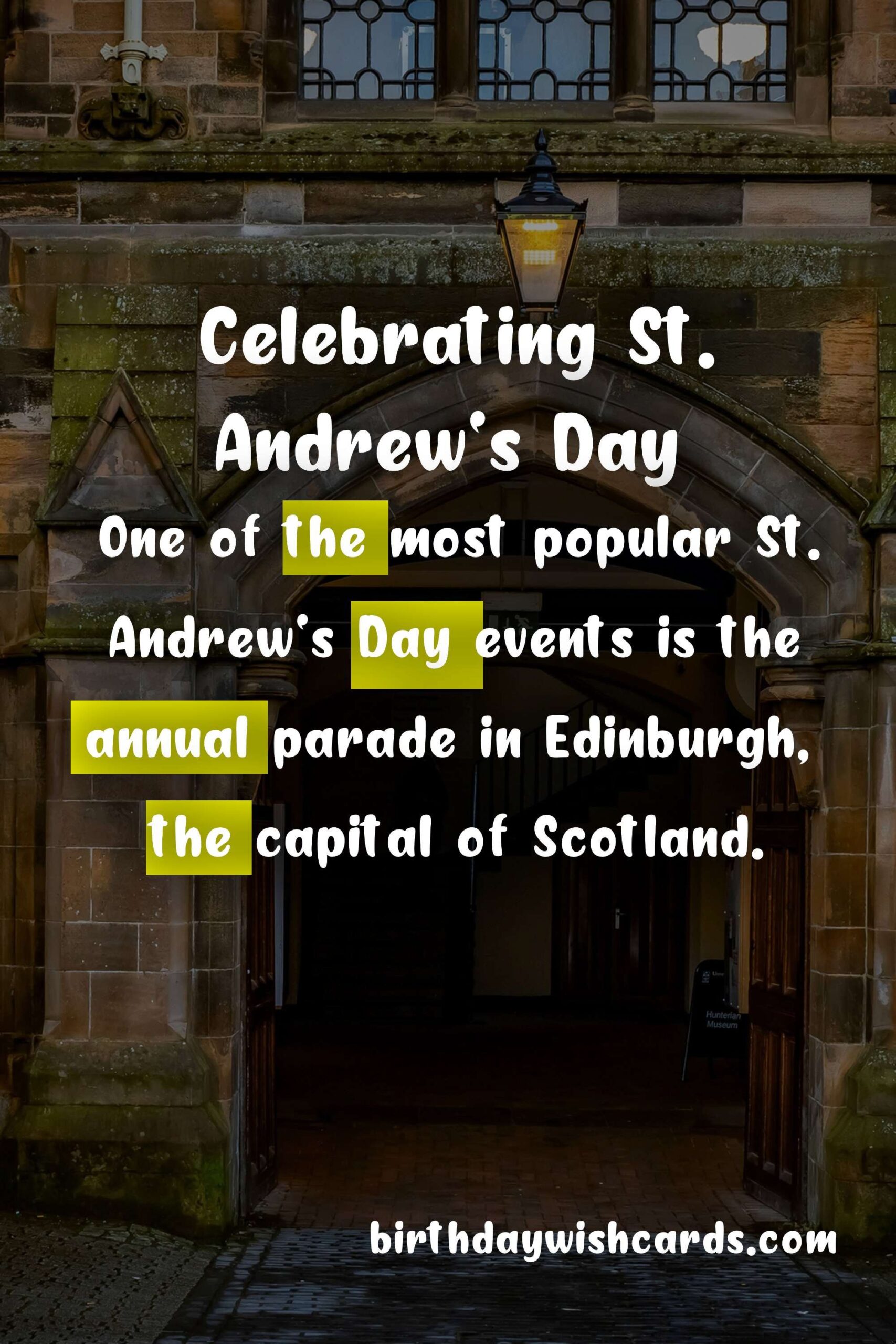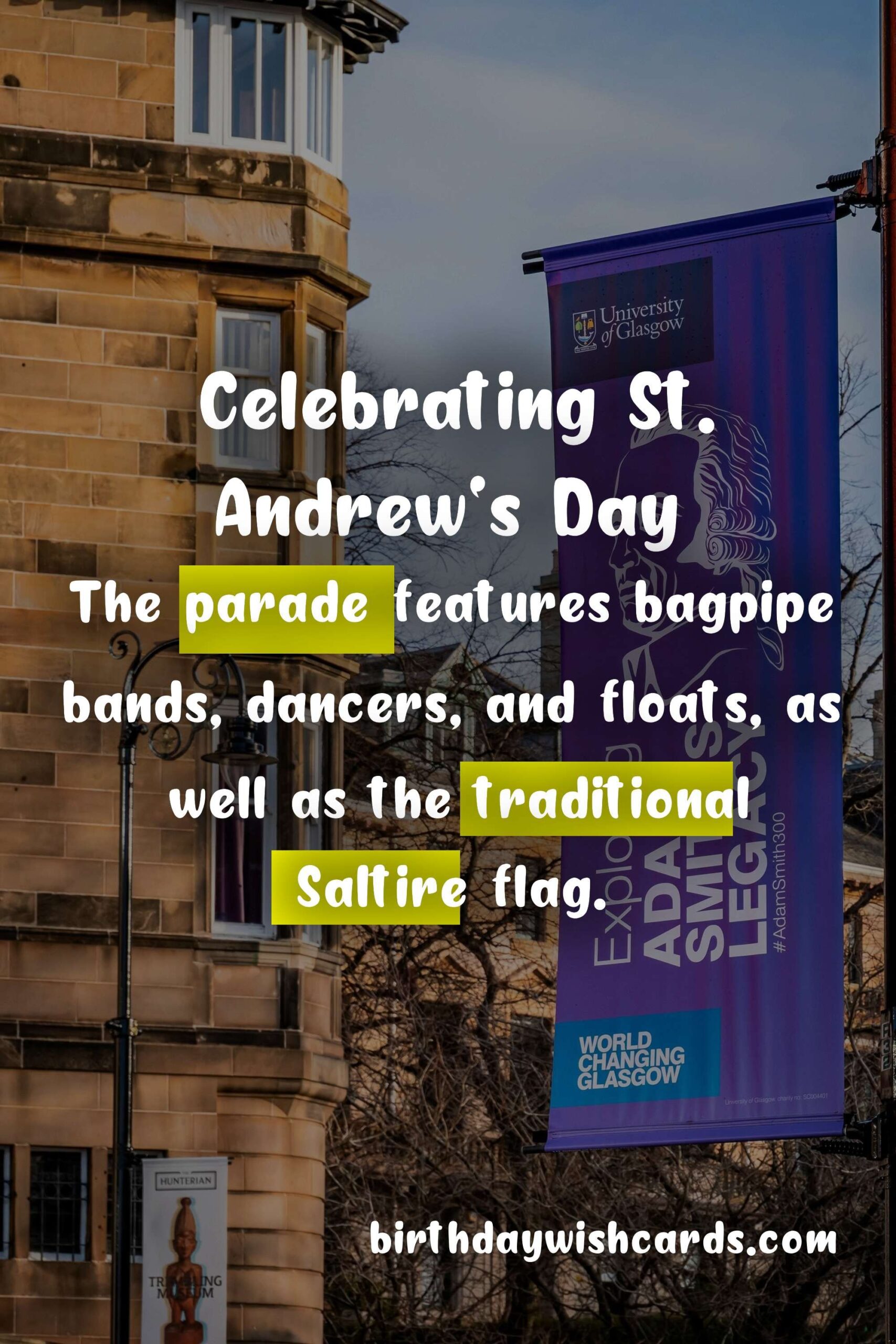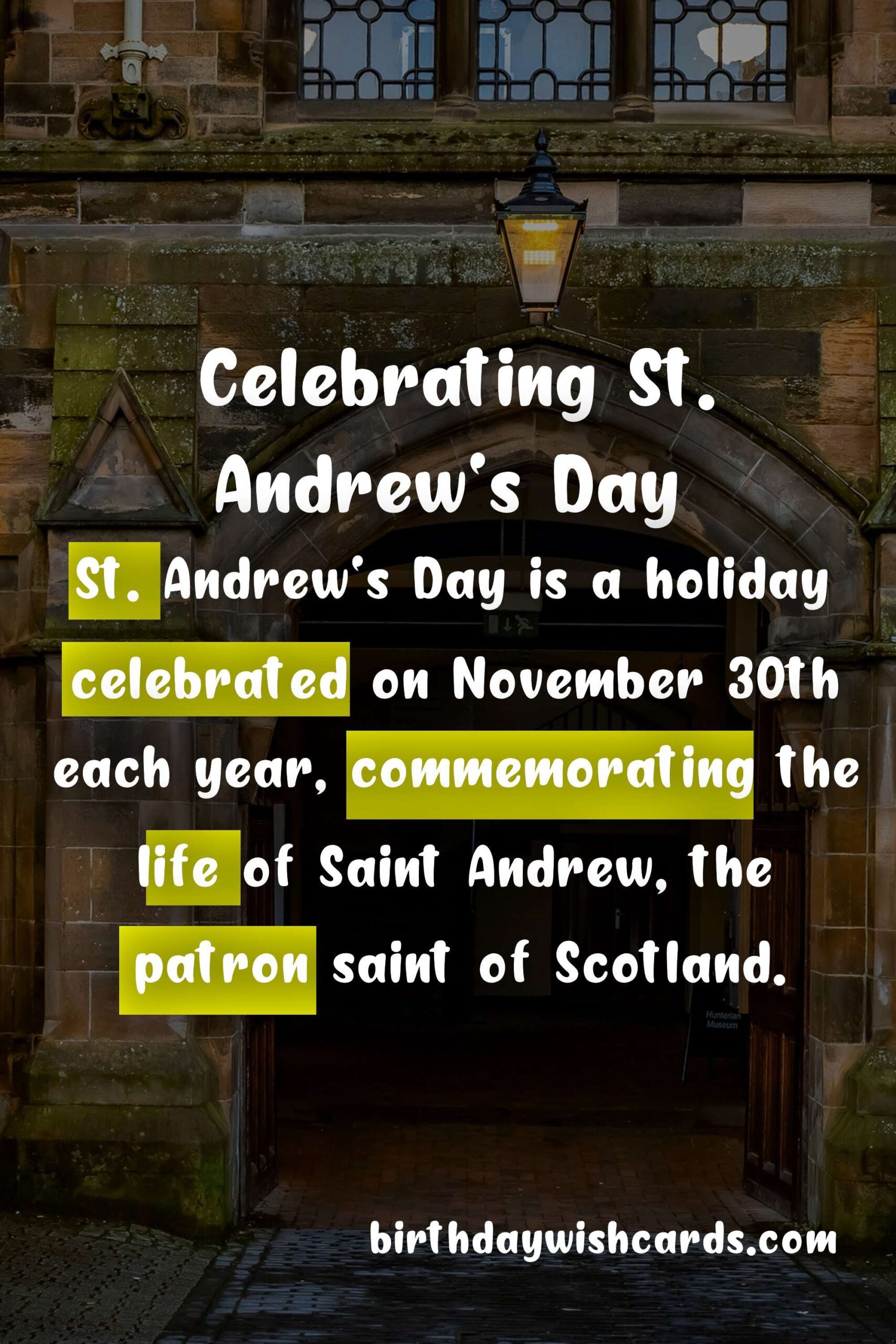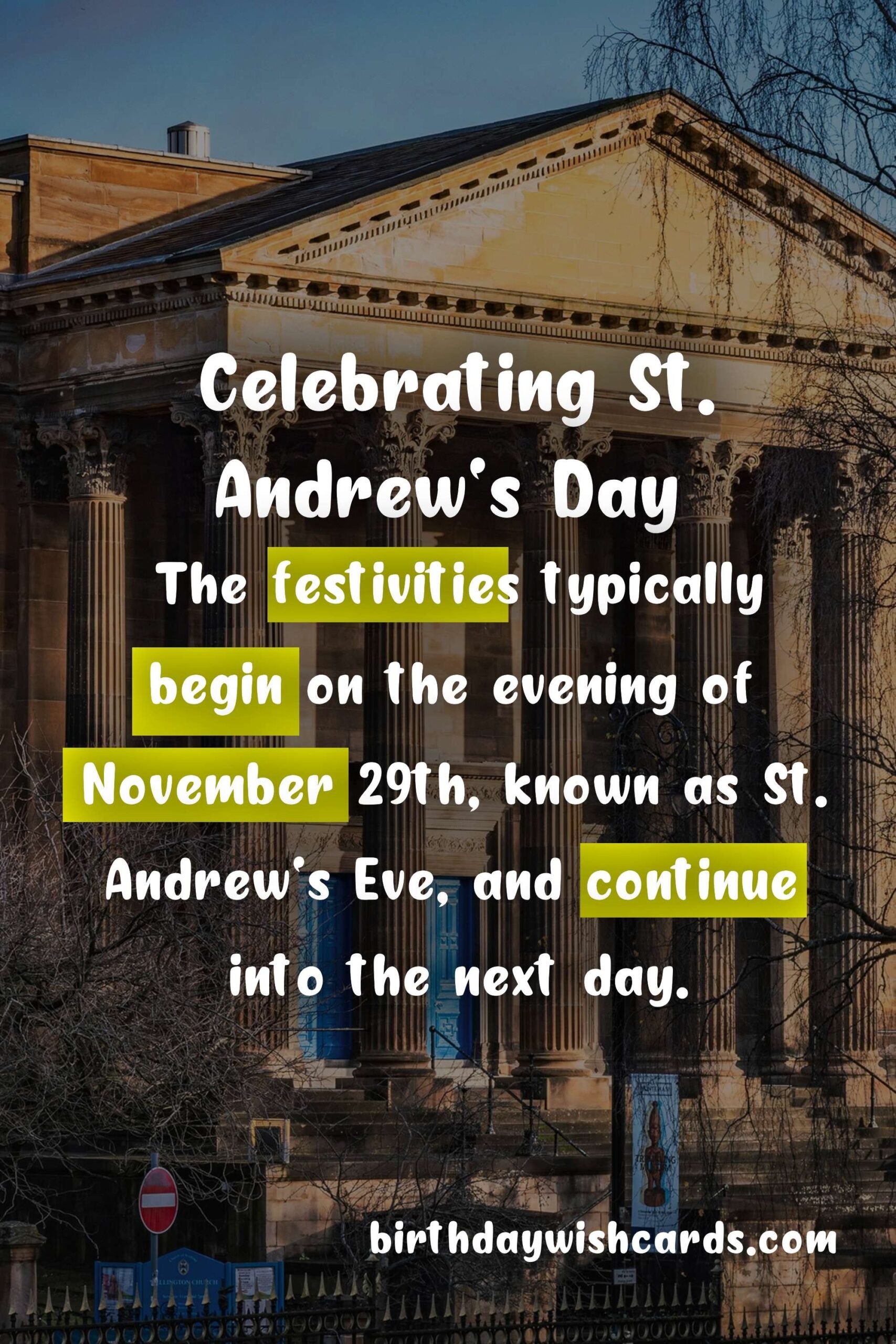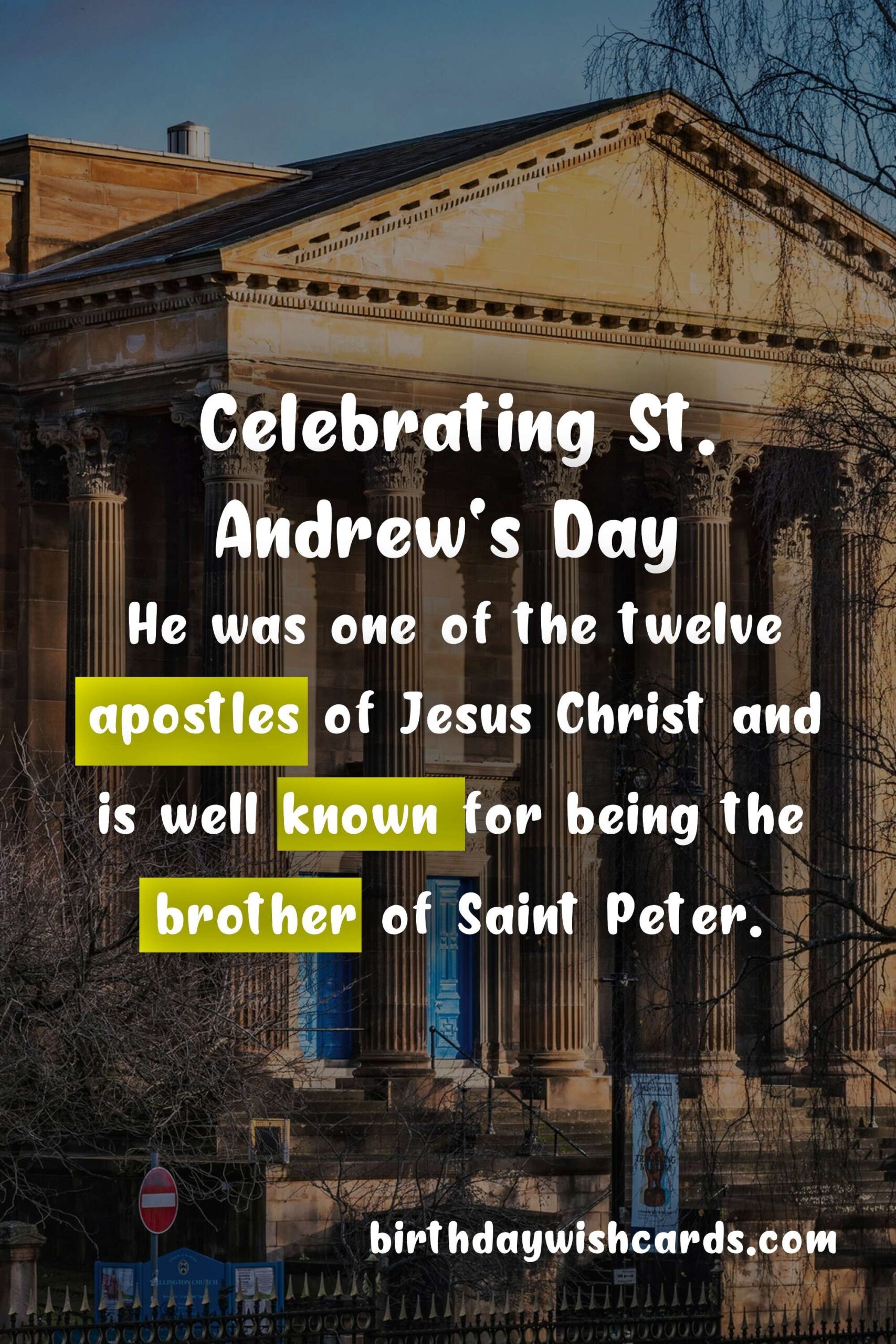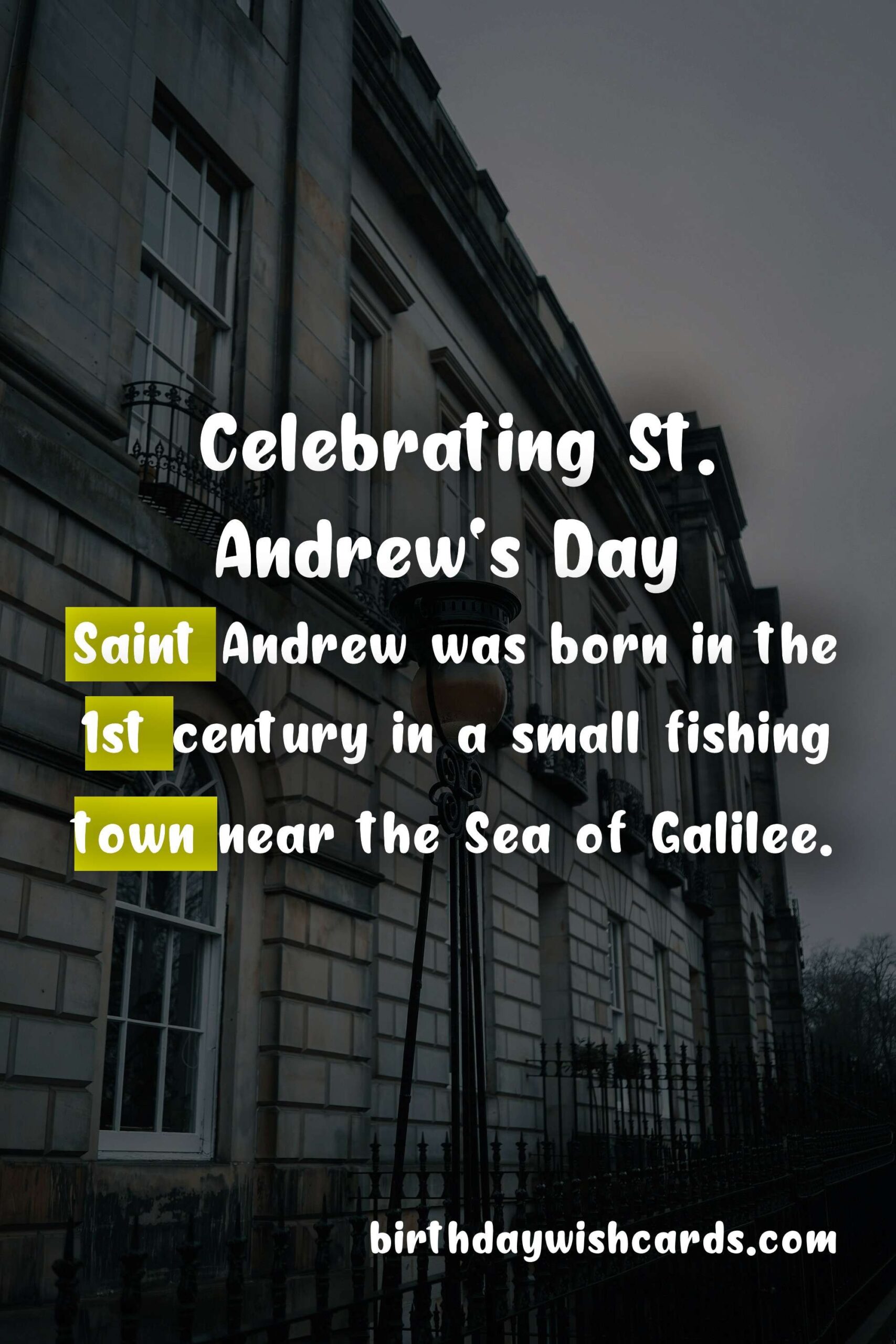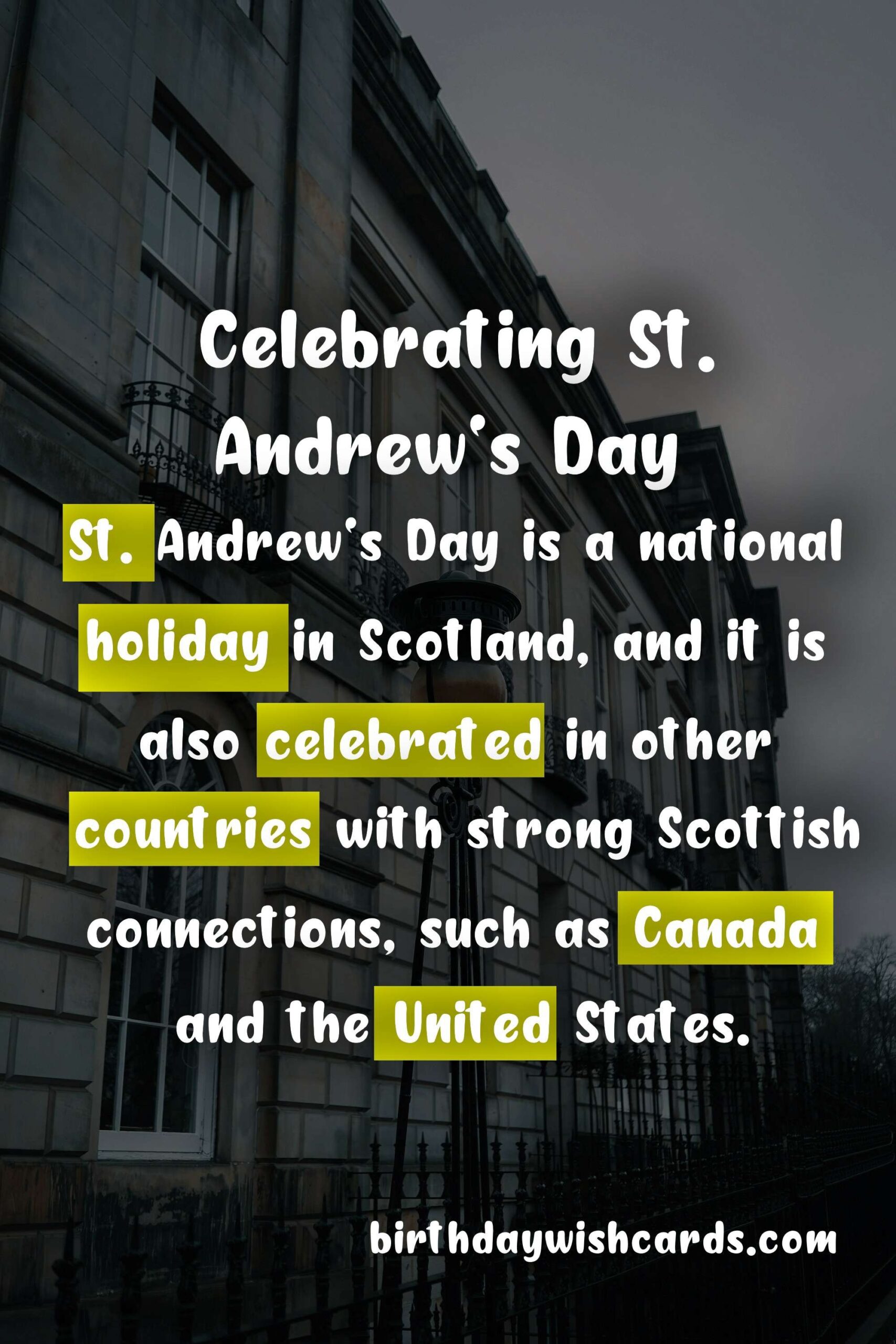 St. Andrew’s Day is a holiday celebrated on November 30th each year, commemorating the life of Saint Andrew, the patron saint of Scotland. This day holds great cultural significance for the Scottish people, as it celebrates their national identity and pride. But who was Saint Andrew and why is he celebrated on this particular day? Let’s delve into the history and traditions of St. Andrew’s Day.
St. Andrew’s Day is a holiday celebrated on November 30th each year, commemorating the life of Saint Andrew, the patron saint of Scotland. This day holds great cultural significance for the Scottish people, as it celebrates their national identity and pride. But who was Saint Andrew and why is he celebrated on this particular day? Let’s delve into the history and traditions of St. Andrew’s Day.
The Life of Saint Andrew
Saint Andrew was born in the 1st century in a small fishing town near the Sea of Galilee. He was one of the twelve apostles of Jesus Christ and is well known for being the brother of Saint Peter. According to legend, Saint Andrew was crucified on an X-shaped cross, which has since become known as the Saltire, or the cross of St. Andrew. He is also credited with introducing Christianity to Scotland.
The Origins of St. Andrew’s Day
The holiday of St. Andrew’s Day dates back to the 11th century, when Queen Margaret of Scotland declared that her husband, King Malcolm, had been saved from a deadly storm after praying to Saint Andrew. In gratitude, she ordered the establishment of this holiday to honor the saint.
Traditions and Celebrations
St. Andrew’s Day is a national holiday in Scotland, and it is also celebrated in other countries with strong Scottish connections, such as Canada and the United States. The festivities typically begin on the evening of November 29th, known as St. Andrew’s Eve, and continue into the next day.One of the most well-known traditions of St. Andrew’s Day is the lighting of bonfires. This comes from the story of fishermen who were stranded at sea during a violent storm, but were saved by a miraculous fire that appeared on the shores of St. Andrews.On this day, many people also partake in traditional Scottish dishes, such as haggis, neeps and tatties (mashed turnips and potatoes), and Scottish shortbread. Whisky is also often enjoyed in celebration.In recent years, the holiday has become a more secular celebration, with events like concerts, parades, and Scottish dancing taking place in cities throughout Scotland and around the world. Schools and organizations also often hold events to celebrate Scottish culture and heritage on this day.
The Famous St. Andrew’s Day Parade
One of the most popular St. Andrew’s Day events is the annual parade in Edinburgh, the capital of Scotland. The parade features bagpipe bands, dancers, and floats, as well as the traditional Saltire flag. This parade attracts thousands of tourists and locals alike, and is a highlight of the St. Andrew’s Day festivities.
Conclusion
St. Andrew’s Day is a day of celebration and pride for the Scottish people, honoring their patron saint and centuries of rich history and traditions. It is a time to gather with friends and family, indulge in traditional Scottish food and drink, and partake in the various events and activities that celebrate Scottish culture and heritage. St. Andrew’s Day is a holiday celebrated on November 30th each year, commemorating the life of Saint Andrew, the patron saint of Scotland. This day holds great cultural significance for the Scottish people, as it celebrates their national identity and pride. Saint Andrew was born in the 1st century in a small fishing town near the Sea of Galilee. He was one of the twelve apostles of Jesus Christ and is well known for being the brother of Saint Peter. According to legend, Saint Andrew was crucified on an X-shaped cross, which has since become known as the Saltire, or the cross of St. Andrew. The holiday of St. Andrew’s Day dates back to the 11th century, when Queen Margaret of Scotland declared that her husband, King Malcolm, had been saved from a deadly storm after praying to Saint Andrew. In gratitude, she ordered the establishment of this holiday to honor the saint. St. Andrew’s Day is a national holiday in Scotland, and it is also celebrated in other countries with strong Scottish connections, such as Canada and the United States. The festivities typically begin on the evening of November 29th, known as St. Andrew’s Eve, and continue into the next day. One of the most well-known traditions of St. Andrew’s Day is the lighting of bonfires. On this day, many people also partake in traditional Scottish dishes, such as haggis, neeps and tatties (mashed turnips and potatoes), and Scottish shortbread. Whisky is also often enjoyed in celebration. In recent years, the holiday has become a more secular celebration, with events like concerts, parades, and Scottish dancing taking place in cities throughout Scotland and around the world. Schools and organizations also often hold events to celebrate Scottish culture and heritage on this day. One of the most popular St. Andrew’s Day events is the annual parade in Edinburgh, the capital of Scotland. The parade features bagpipe bands, dancers, and floats, as well as the traditional Saltire flag. This parade attracts thousands of tourists and locals alike, and is a highlight of the St. Andrew’s Day festivities. 
